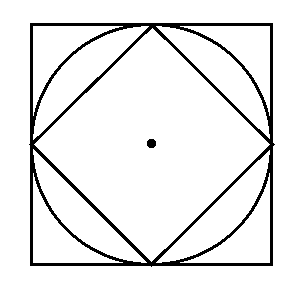Next: Histogram and normalization Up: Neighbors and Connectivities Previous: Connectivity
Any distance metric 


 iff
iff ;
;
 ;
;
 .
.
 is an arbitrary pixel.
is an arbitrary pixel.
Specifically, the distance between pixels 



![$\displaystyle D_E(p,q)=\sqrt{(x-u)^2+(y-v)^2}=[\vert x-u\vert^2+\vert y-v\vert^2]^{1/2}$](img72.svg) |
(11) |
![$\displaystyle D_4(p,q)=\vert x-u\vert+\vert y-v\vert=[\vert x-u\vert^1+\vert y-v\vert^1]^{1/1}$](img73.svg) |
(12) |
![$\displaystyle D_8(p,q)=max\{\vert x-u\vert,\vert y-v\vert\}=[\vert x-u\vert^\infty+\vert y-v\vert^\infty]^{1/\infty}$](img74.svg) |
(13) |
From these definitions we see that a general distance definition is
![$\displaystyle D(p,q)=[\vert x-u\vert^L+\vert y-v\vert^L]^{1/L}$](img75.svg) |
(14) |
 can take any value between 1 and
can take any value between 1 and  . When
. When  is small
(e.g., 1), contributions of the two dimensions are treated equally,
but when
is small
(e.g., 1), contributions of the two dimensions are treated equally,
but when  is large (e.g., toward
is large (e.g., toward  ), the dimension with
larger contribution is more emphasized. Note that other types of
distance metrics can also be used.
), the dimension with
larger contribution is more emphasized. Note that other types of
distance metrics can also be used.
The 
The numbers in the following array show the 
| 4 | 3 | 2 | 3 | 4 |
| 3 | 2 | 1 | 2 | 3 |
| 2 | 1 | 0 | 1 | 2 |
| 3 | 2 | 1 | 2 | 3 |
| 4 | 3 | 2 | 3 | 4 |
The numbers here are the 
| 2 | 2 | 2 | 2 | 2 |
| 2 | 1 | 1 | 1 | 2 |
| 2 | 1 | 0 | 1 | 2 |
| 2 | 1 | 1 | 1 | 2 |
| 2 | 2 | 2 | 2 | 2 |
The following figure shows the iso-distance contours composed of all
points having equal distance to the center point. The circle is for
Euclidean distance, the square is for the 


Distance between two connected pixels can be defined as the number of hops from one pixel to the next along the shortest path connecting the two pixels, according to the definition of connectivity (4, 8, or mix-connected).
The upper-right pixel is 8 and mix-connected to the lower-left pixel
with a 
| 0 | 0 | 1 |
| 0 | 1 | 0 |
| 1 | 0 | 0 |
The upper-right pixel is 4 and mix-connected to the lower-left pixel
with a 
| 0 | 1 | 1 |
| 0 | 1 | 0 |
| 1 | 1 | 0 |